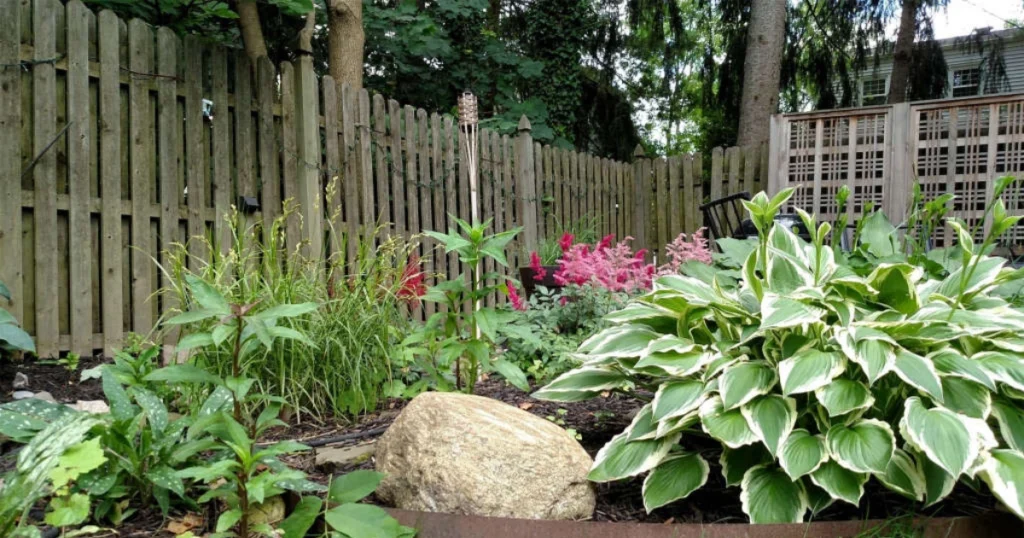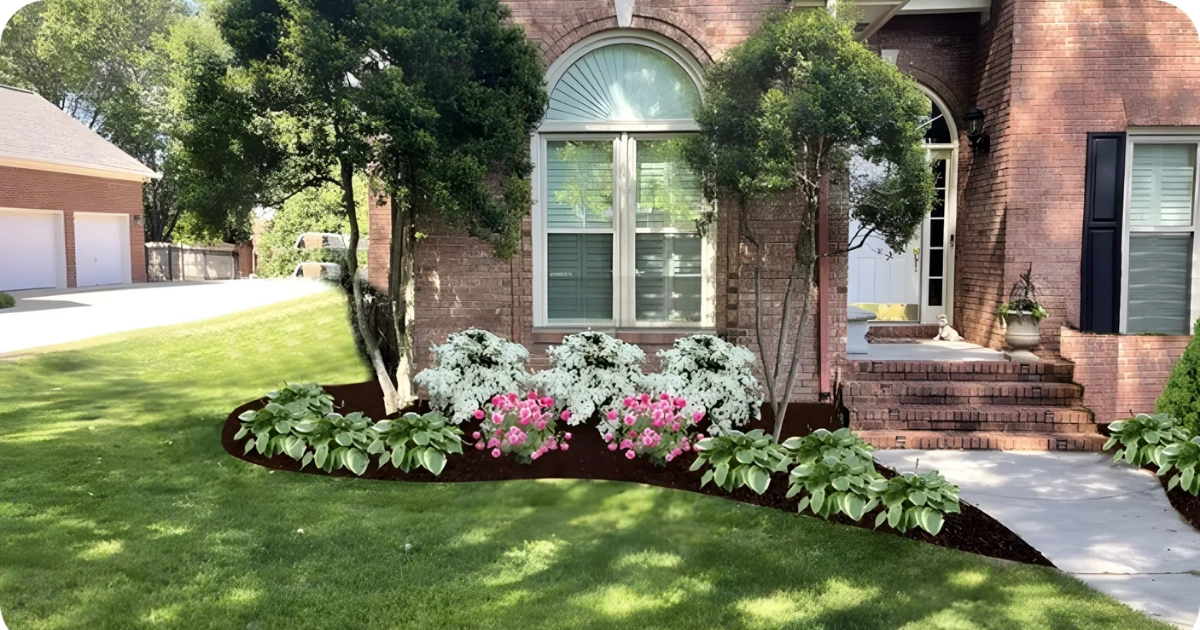A Secret World Beneath the Canopy
The shaded space beneath trees often goes underutilized in gardens, dismissed as too dark or dry to support lush growth. But in reality, this area holds enormous potential for creating stunning, serene, and eco-friendly spaces. With the right selection of shade-loving plants, you can transform these overlooked zones into flourishing, colorful retreats teeming with life.
In this guide, we’ll reveal 25 incredible plants that thrive in partial to deep shade under trees, share expert gardening tips for planting in low-light conditions, and explore how to avoid the most common mistakes gardeners make with shaded beds.
🌤️ Why Shade Gardening Matters
Shaded gardens offer more than just a cool escape from the sun. They provide:
- Microhabitats for pollinators and small wildlife
- Lower water requirements than sunny beds
- A natural buffer against weeds and erosion
- Elegant textures and lush greenery
Plus, they allow you to work with nature—not against it—by respecting your tree’s root system and creating harmony in your landscape.
🌱 How to Select the Right Shade-Loving Plants
Choosing the best plants for under-tree planting involves a few key considerations:
- Light Level: Partial shade (filtered light) vs deep shade (very little direct light)
- Soil Conditions: Dry shade under maples vs moist shade under oaks
- Root Competition: Shallow-rooted trees can limit water and nutrient access
- Maintenance Needs: Go for low-maintenance perennials when possible
Look for terms like “shade-tolerant,” “woodland plant,” or “understory species” when shopping for plants.
🌸 Top 25 Plants That Thrive Under Trees
Here’s a breakdown of 25 excellent plants for shaded tree beds, grouped by type:
🌼 Flowering Perennials
- Anemone – Spring and fall blooms, thrives in part shade
- Astilbe – Feather-like plumes, prefers moist soil and partial shade
- Columbine (Aquilegia) – Nods of color and attracts hummingbirds
- Begonias – Vibrant flowers and foliage, ideal in rich moist soil
- Cyclamen – Perfect groundcover with delicate spring flowers
- Primrose – Early bloomer, enjoys cool, moist conditions
- Camellia – Showy flowers in late winter or spring
- Tree Peony – Luxurious, large blooms for partial shade
🌿 Foliage Stars & Ferns
- Hostas – Variegated leaves, a classic for shady beds
- Boston Fern – Elegant fronds, thrives in high humidity
- Brunnera – Heart-shaped leaves with silver highlights
- Epimedium – Drought-tolerant with charming foliage
- Corydalis – Soft leaves and yellow or blue flowers
- Moss Phlox – Low-growing with attractive texture

🌻 Groundcovers & Low Spreaders
- Lamium (Dead Nettle) – Silver-variegated leaves and pink blooms
- Lily of the Valley – Fragrant white bells, prefers moist shade
- Lysimachia – Good erosion control with sunny foliage
- Sedum (Shade Tolerant Varieties) – Drought-proof with succulent leaves
- Bergenia – Thick leaves and bright pink blooms
🌲 Shrubs & Bushes
- Symphorine (Snowberry) – Spring flowers and autumn berries
- Ninebark – Colorful foliage and layered texture
- Azalea – Thrives in acidic shaded soils
- Hydrangea – Massive blooms in light shade
- Arum – Bold foliage for wet, shaded soils
- Coleus – Leaf color explosion for borders
🧤 Planting & Care Guide
Follow these tips to help your under-tree garden flourish:
- 1. Prepare the soil carefully. Use a fork instead of a spade to avoid harming roots.
- 2. Amend with compost. Add organic matter to improve water retention and fertility.
- 3. Choose the right plants. Focus on native, shade-tolerant, drought-resilient varieties.
- 4. Mulch moderately. Avoid piling mulch against the tree trunk.
- 5. Water deeply. Especially during the first few weeks of planting.
- 6. Space smartly. Allow airflow and avoid crowding for disease prevention.
❌ Common Mistakes to Avoid
- Overdigging near tree roots: This stresses trees and damages vital root systems.
- Overwatering: Shady areas stay moist longer—adjust your watering routine.
- Ignoring plant size: Some plants will outgrow small spaces quickly under trees.
🌦️ Seasonal & Regional Tips
- In temperate regions, plant in early spring or fall for better establishment.
- In hot climates, select drought-tolerant varieties like Epimedium and Sedum.
- In cold zones, use mulch to insulate roots and extend plant survival.
🧰 Tools & Materials Checklist
- 🌿 Shade-tolerant plants
- 🛠️ Garden fork
- 🧴 Compost or organic mulch
- 🌧️ Watering can or hose with gentle setting
- ✂️ Hand pruners
- 🧤 Gardening gloves
🌟 Benefits Recap
- Adds visual interest to unused shady areas
- Encourages biodiversity and pollinators
- Controls weeds and erosion naturally
- Conserves water
- Increases the value and beauty of your garden
❓FAQs
Q1: Can I plant under pine trees?
A: Yes, but choose acid-tolerant plants like azaleas or ferns.
Q2: What if it’s too dry under my tree?
A: Add mulch and choose drought-resistant plants like Epimedium.
Q3: How do I plant without hurting tree roots?
A: Use hand tools to loosen soil without digging deep; plant between roots.
Q4: Are hostas safe for pets?
A: No, hostas can be toxic to dogs and cats.
Q5: Can I use containers instead?
A: Absolutely! Containers allow control over soil and water.
Q6: Will flowers bloom in full shade?
A: Many, like Astilbe and Lamium, bloom even in dense shade.
Q7: How much sun is “partial shade”?
A: About 3–4 hours of filtered or morning sun per day.
🌼 Ready to Transform Your Shade Garden?
Don’t let those dark, dry spots beneath trees go to waste. With the right plant selection and a few smart techniques, you can create a vibrant under-tree garden that bursts with life all season long.
Have your own tips or favorite shade plants? Share them in the comments below


Altıntepsi su kaçak tespiti Altunizade su kaçağı tespiti: Altunizade’de su kaçağı için profesyonel destek. https://soc.robik.net/read-blog/28444
25372 802104Some truly marvelous function on behalf with the owner of this web site , dead great articles . 871345
https://t.me/s/officials_pokerdom/3408
https://t.me/officials_pokerdom/3786
https://t.me/s/atom_official_casino
https://t.me/s/official_pokerdom_pokerdom